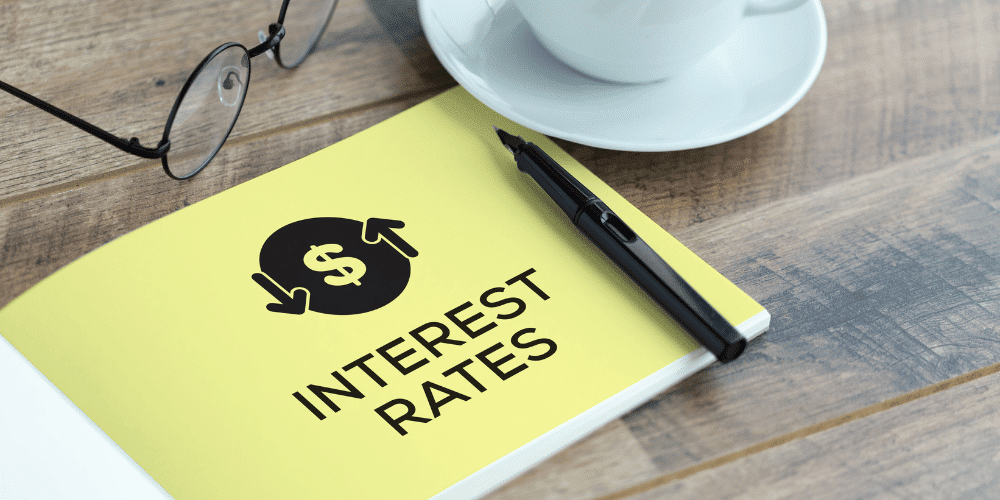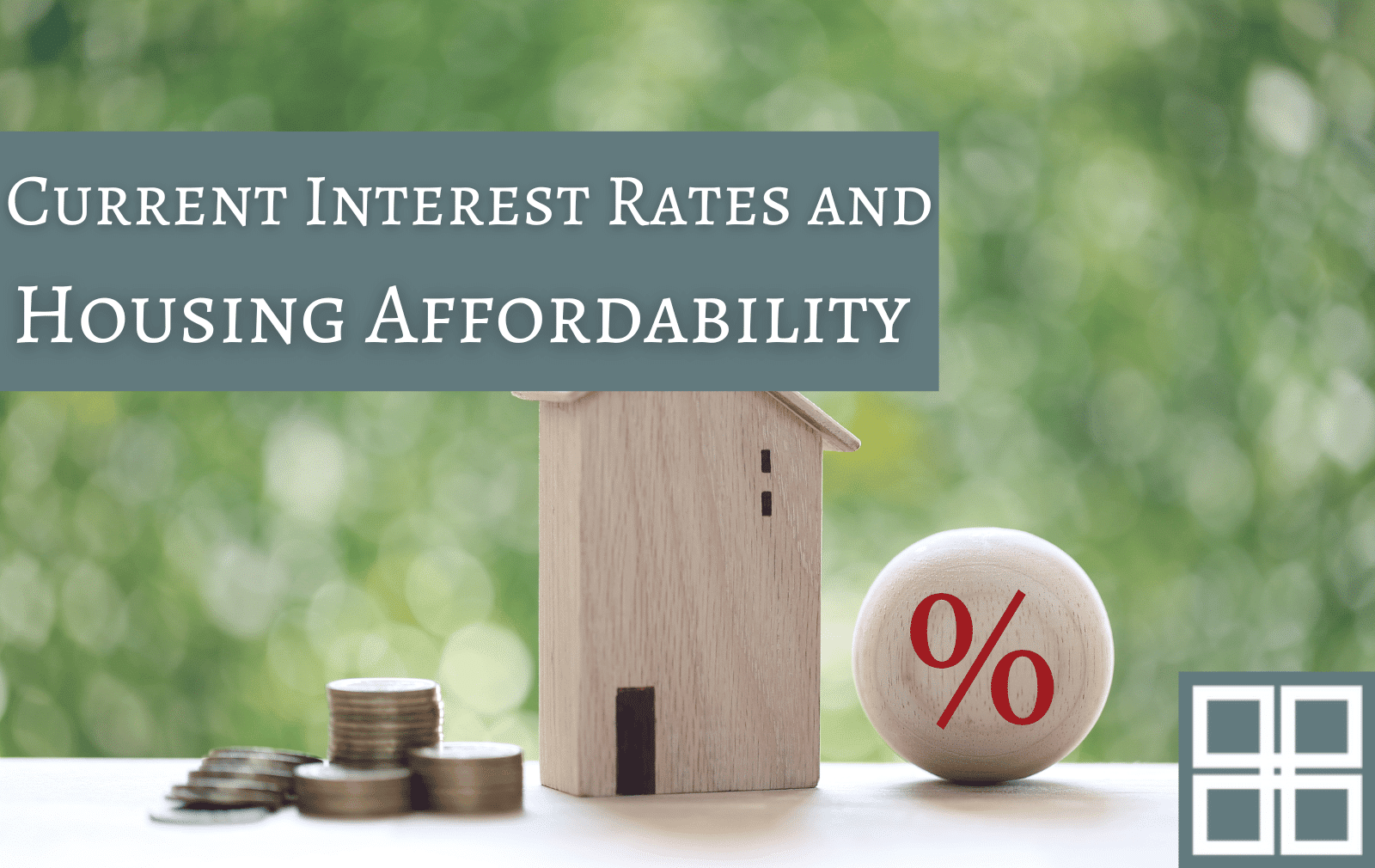Current Interest Rates & Housing Affordability Landscape Overview
If you’ve kept up with the market lately, you’ve noticed that home prices are rising rapidly across the country. With this surge in demand, many people are wondering whether buying a home is still feasible. Especially with interest rates on the rise.
While it’s true that rates have been increasing, it’s important to consider the historical context of these rates. In fact, even with the recent uptick, 6-7% rates are still historically low. Homeownership is still very feasible for many Americans.
With that in mind, we’ll explore the current state of housing affordability in the context of interest rates. We’ll take a closer look at how interest rates have fluctuated over time and how they’re determined in the market.
We’ll also discuss what housing affordability is and how it is determined. As well as the feasibility of homeownership in the current market. Finally, we’ll look at potential future changes in interest rates and what they may mean for prospective homebuyers.
Understanding the relationship between interest rates and housing affordability is crucial to making informed decisions about your home purchase. This goes for first-time buyers and seasoned investors alike. So, let’s dive in and explore the current state of the housing market!
The historical context of interest rates
Interest rates have been a critical factor in the housing market for many years. Looking back through history, we can see that they have fluctuated significantly over time.
According to Freddie Mac, rates peaked in 1981, when the average was 16.63%. Keep in mind that was the average. Just as today, factors like location, credit score and the individual lender played a role in determining individual rates. It wasn’t unheard of to see rates of 18-20% at the time.
In contrast, in the 2010s through 2022, interest rates were at historic lows. Some lenders were offering rates at 3% or below.
Today, interest rates on home loans are hovering around 6-7%, which is higher than the rates we’ve seen in recent years. However, comparatively speaking to historic rates, these can very much still be considered low.
So, how have interest rates affected the housing market in the past? When rates are high, it becomes more expensive to borrow money to purchase a home. This can lead to a decrease in demand for homes, which can cause home prices to fall.
On the other hand, when interest rates are low, it becomes more affordable to borrow money. This leads to an increase in demand and potentially higher home prices.
Interest rates can also affect the types of loans that are available to borrowers. For example, when rates are low, adjustable-rate mortgages (ARMs) may become more popular. They allow borrowers to take advantage of lower interest rates for a set period before potentially adjusting upward.

Current interest rates
The current rates for home loans are slightly higher than the historic lows we’ve seen in recent years. However, compared to historical rates, they are still very low, making homeownership feasible for many Americans. As of April 20, 2023, the average interest rate on 30-year fixed mortgages is around 6.96%. And the average interest rate on a 15-year fixed-rate mortgage loan is around 6.30%.
Interest rates are determined by a variety of factors, including inflation, economic growth, and the supply and demand for money. The Federal Reserve plays a critical role in setting interest rates through its monetary policy decisions. For example, when the economy is struggling, the Federal Reserve bank may lower rates to encourage borrowing and stimulate economic growth. Conversely, when the economy is growing too quickly, the Federal Reserve may raise rates to help prevent inflation.
The feasibility of homeownership
Thanks to current interest rates, homeownership is more feasible than ever for many Americans. With rates hovering around 6-7%, it’s a great time to take advantage of low interest rates to purchase a home.
One of the major benefits of lower interest rates is that they can significantly impact monthly mortgage payments and overall affordability. For example, on a 30-year fixed rate mortgage for a $350,000 home, a 2% decrease can save homeowners up to $110,000. This can make a huge difference in monthly payments and overall affordability.
In addition to the financial benefits, homeownership also provides a variety of other potential benefits. For one, it allows individuals to build equity in their home over time. This can provide a financial cushion and potential source of wealth.
Homeownership also provides stable housing costs. This can be particularly beneficial in times of economic uncertainty or fluctuation in rental prices.

The future of interest rates
While interest rates are currently still low, it’s important to consider the potential future changes. While no one can predict what the future holds, experts generally expect interest rates to rise over the coming years.
Higher interest rates could impact the housing market in a variety of ways. For one, they could decrease affordability for prospective homebuyers. This could make it more difficult for individuals to qualify for mortgages or afford monthly payments. This could lead to a slowdown in home sales and a potential decrease in home prices.
Despite these potential challenges, there are steps that prospective homebuyers can take to prepare for potential changes in interest rates. One key recommendation is to work with a trusted real estate professional. They can help navigate the complexities of the market and understand the implications of changes in rates.
Conclusion
In conclusion, understanding the historical context of interest rates and their impact on the housing market is key to making informed decisions about homeownership. While interest rates have fluctuated over the years, the current rates are still historically low and make homeownership feasible for many Americans. By carefully considering factors such as housing affordability, monthly mortgage payments, and potential changes in interest rates, prospective homebuyers can make informed decisions about purchasing a home.
At Heather Murphy Group, we are committed to helping our clients navigate the complexities of the housing market and find their dream home. With our expertise in the Savannah area and our commitment to exceptional service, we are confident that we can help you find the perfect home for your needs and budget. Whether you are a first-time homebuyer or an experienced investor, we are here to help. Contact us today to learn more about how we can help you achieve your homeownership goals.









